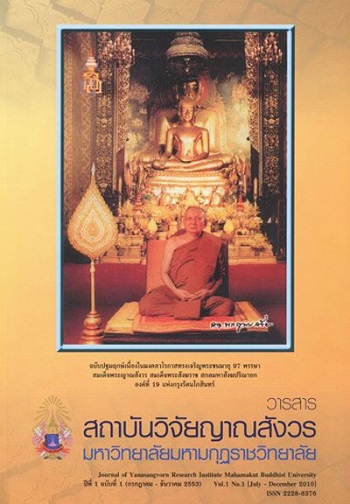The consequences from practicing Dhammachakra Sutra by the people in the vicinity of the Great Bodhi Tree Sri Maha Bodhi
Main Article Content
Abstract
This research article had presented the pilgrimage alternative of which the qualitative research was aimed at studying the merit from the Great Bodhi Tree, and the merit gained from the praying Dhammackakra Sutra was applied in everyday life. The development of the vicinity of the Bodhi Tree Sri Maha Bodhi was made as the major tourist destination in the world. Tools used in this study were the interview from the key informants who had paid homage to the Great Bodhi Tree Sri Maha Bodhi. The contents of the interviews were analysed according to the themes. The data describing the features of the Great Bodhi Tree Sri Maha Bodhi were discused and presented. The research results were found that the importance of Bodhi Tree Sri Maha Bodhi was the contemporary tree, symbol and representative or partner of Buddha. The inspiration came from praying to the great Bodhi Tree Sri Maha Bodhi. It was known that this was the first and only shoot Bodhi Tree from Budha Gaya, India. The merit was gained from praying the Dhammachakra Sutra at the Great Bodhi Tree Sri Maha Bodhi. Perfection was made and the core Dhamma of Buddhism was learnt. It created joyfulness and mindfulness to the prayers who had applied the principles of Dhamma in their daily life, that was to day, to spread loving – kindness, to pray before going to bed, and to keep precepts to do meditation. Helping others to do good with perseverance and patience was be made. There were suggestions to have public relations in various forms to require the development of the early Prasrimahabodhi as the good center of the practice of Buddhists all over the world.


